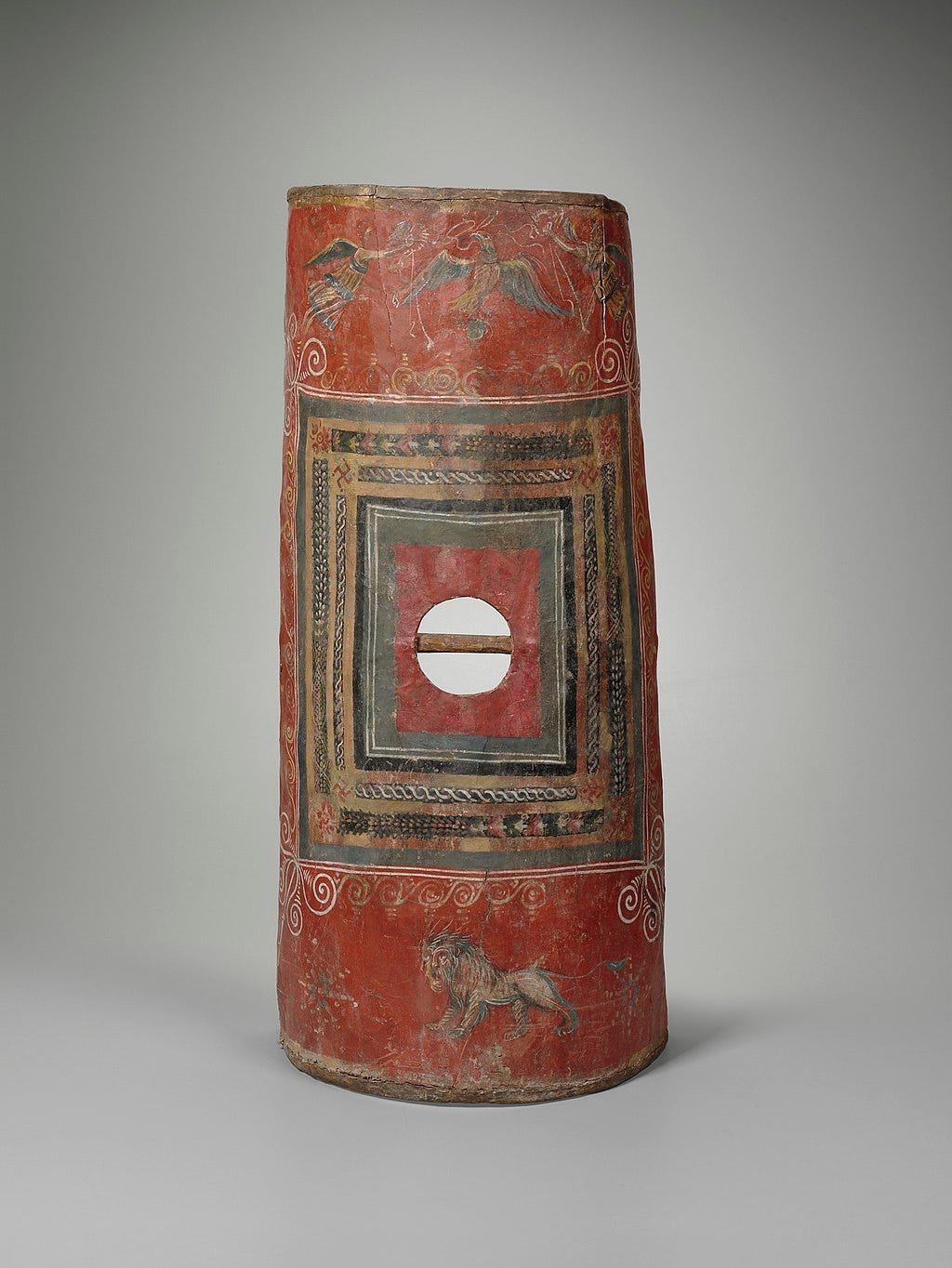We decided that every Friday, we’re going to talk about things that don’t involve any of the four horsemen of the Apocalypse. From now on, we’re dedicating Fridays to the cosmopolitan part of the globalist. We’ll talk about great cities, great books, the world’s best gardens, Roman history, our favorite languages, travel by train, cooking, the best music by which to drive through the American southwest in a convertible, writing and literature, the world’s best restaurants, the world’s best recipes, navigating Paris by scent, the best martial art, how to train a puppy, how to hitch a ride on a cargo ship, how to renovate a Louis XV commode, circuses we’ve loved, circuses we’ve run away to join—or anything, really, but war, famine, terrorism, nuclear proliferation, and death.
Museums we mention:
The Scutum from Dura-Europos:
A Vilnius descent, by John
There’s something deeply unsettling about standing in a Soviet prison cell, even when it is part of a museum. The air feels dank. The walls are thick, the windows frosted out, and the heavy door can swing closed with surprising ease. There’s an unavoidable sense that with one shove, you could be disappeared, trapped, invisible to the world outside. Instinctively, you do not feel comfortable lingering too long inside.
I was in the basement level of Vilnius’ Museum of Occupations and Freedom Fights—known as the “KGB Museum” to the tourist tours. It’s housed in the building that played host successively to the Gestapo and then the organs of Soviet security who despite ever-changing names (NKVD, MGB, KGB) never altered their purpose or cruelty. Operational as a prison until the dissolution of the USSR, the newly independent Lithuania preserved it as a museum. …
Orhan Pamuk’s Museum of Innocence, by Claire
… The novel is one of his great accomplishments, and the idea of representing the story in two forms is ingenious. Of course, the idea can only work if one writes a novel about a museum. The novel is about more than this, though: It is about love, and it is about Istanbul, and it is about the power of artifacts to evoke nostalgia. It is a long—perhaps excessively long—account of Kemal, an idle Istanbul playboy, and his florid obsession with Füsun, a lower-class shop girl 12 years his junior. Unable to possess her beyond the initial heady days of their affair, he spends years contriving simply to be in her presence, whereupon he pilfers and collects artifacts connected with her. He consoles himself by touching the things she has touched, ultimately transforming Füsun into a fully developed museum of objects consecrated to his obsession with her.
… To enter the museum itself is to feel that past evoked, and it is to feel the book—and indeed an entire era and culture—evoked. It is a bit like reading the script for a play and then seeing its performance. The museum is as carefully crafted as the book, presenting in meticulous display cases and boxes the items used and collected and discussed by the novel’s characters, and managing somehow to make them compelling rather than disgusting—not an easy trick when one of the exhibits comprises 4,213 cigarette butts, each supposedly smoked by Füsun. It is the minute attention to detail that spares this display from grotesquerie—the butts have been pinned to the wall like a lepidopterist's prized treasures; there is something fascinating about the author’s handwritten notes, beneath each butt, and the lipstick stains—each the same shade—or the lack of lipstick, and the way some cigarettes are half-smoked, others stubbed to the core in a suggestion of rage.
The love and memory on display here are not merely that of Kemal for the vanished Füsun, but Pamuk’s for the vanished Istanbul of his youth, the “irreplaceable mementos of a lost world whose every detail figured in the meaning of the whole.” Istanbullus of a certain age roamed the museum with expressions of tender recognition—“Oh yes, we remember that”—the brand names, the film stars, the high-society gossip columns, the photographs of women from newspapers of the epoch with black bands branded across their eyes. (Such was the fate of women who had sex before marriage.)
Paris syndrome (French: Syndrome de Paris) is a transient psychological disorder encountered by some people visiting or vacationing in Paris and more generally France and Spain. It is similar in nature to Jerusalem syndrome and Stendhal syndrome.
Japanese visitors are observed to be especially susceptible. It was first noted in Nervure, the French journal of psychiatry in 2004. From the estimated six million yearly visitors, the number of reported cases is significant: according to an administrator at the Japanese embassy in France, around twenty Japanese tourists a year are affected by the syndrome. The susceptilibity of Japanese people may be linked to the popularity of Paris in Japanese culture, notably the idealized image of Paris prevalent in Japanese advertising, which does not correspond to reality.
Paris Syndrome is characterized by a number of psychiatric symptoms such as acute delusional states, hallucinations, feelings of persecution (perceptions of being a victim of prejudice, aggression, or hostility from others), derealization, depersonalization, anxiety, and also psychosomatic manifestations such as dizziness, tachycardia, sweating, etc. …
Professor Hiroaki Ota, a Japanese psychiatrist working in France, is credited as the first person to diagnose the disease in 1986. However, later work by Youcef Mahmoudia, physician with the hospital Hôtel-Dieu de Paris, indicates that Paris Syndrome is “a manifestation of psychopathology related to the voyage, rather than a syndrome of the traveller.” He theorized that the excitement resulting from visiting Paris causes the heart to accelerate, causing giddiness and shortness of breath, which results in hallucinations in the manner similar to the Stendhal syndrome described by Italian psychologist Graziella Magherini in her book La sindrome di Stendhal.















Share this post